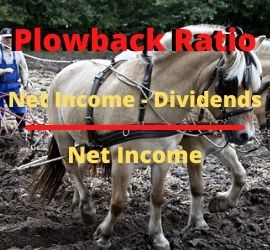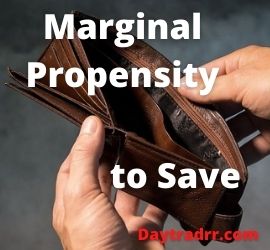Call Premium – What is it?
 There are two common definitions investors should be familiar with regarding the term Call Premium.
There are two common definitions investors should be familiar with regarding the term Call Premium.
For bonds and debt securities – The call premium is the dollar amount over the par value of callable debt security that is given to holders when the security is redeemed early by the issuer. There are usually windows of time when bonds can be called back by their issuers. The call premium for a bond or debt security is also called the redemption premium.
In options terminology – The call premium is the amount that the purchaser of a call option must pay to the writer. A call option gives the buyer the right to purchase a security at a specific price for a specific period of time. The call premium is the amount the buyer pays to the writer or issuer for the right to that specified price and timeframe.
Call Premium – How it Works
The call premium is an amount of money over the face value of the security. For bonds and debt, it is paid if the security is redeemed before the scheduled maturity date. In other words, the call premium is the difference between the call price of the bond and its stated par value. A call premium is essentially the cost of paying a bond off early. It is an amount in addition to the face value to compensate investors if the bond is called before its maturity date.
However, while this is favorable for the bond issuer, it exposes bondholders to inconvenience and reinvestment risk. The original bondholders must now reinvest their funds in a lower interest-paying market. In addition, bonds that are redeemed early stop making interest payments to bondholders. For example, consider an investor holding a 10-year bond that is called after five years. The investor will not receive coupon payments for the remaining five years after the bond is redeemed. The call premium is intended to compensate callable security holders for the reinvestment risk.
Call Provisions Explained
A company will typically issue bonds to help fund its operations through debt instead of equity. Obviously, the company wants to pay the lowest interest rate that it can. When interest rates decline, companies may choose to swap out existing bonds with new ones. For example, Company XYZ issues 12-year corporate bonds paying a 6% interest rate. After four years, interest rates decline to 4%. In this case, Company XYZ may choose to buy back the bonds issued at 6% and issue new bonds at a lower rate of 4%.
Callable securities are riskier for investors for two major reasons:
- Lost interest income – The investor loses the coupon payments for the remaining period between when the bonds were called and the original maturity date.
- Reinvestment risk – The investor can buy new bonds. However, they will not earn as much because interest rates are lower.
The call premium usually pays out about one year of interest but could be higher or lower. It depends on the call provisions issued at the time of purchase. Consideration is given to how many years are left before the bond’s maturity date. Also, the difference between the bond’s purchase price and the call price. During the first few years that a call is permitted, the premium is generally equal to one year’s interest. Then, the call premium gradually declines as the current date approaches the maturity date. At maturity, the call premium is zero.
Call Premium – Debt & Securities vs Options Trading
Bonds and securities
A call premium is calculated using the face value of the bond (also known as the par value). Consideration is given to the amount of time left until the maturity of the bond. Other factors include the underlying volatility of the market, the risk-free interest rate, and the strike price. The strike price is the price at which the bond can be called per the terms of the agreement. Other factors can also contribute to the bond call premium.
For example, 100 shares of Preferred Stock XYZ, have a call option of $7.50 if they are called early. In that case, the investor would be paid $750 ($7.50 x 100 shares) over the face value of the stock. This is because the investment is being repaid early. Preferred stock shares often have call provisions.
Options trading
The term call premium is also be used to refer to a call option’s contract price. When buying call options, investors buy the option to purchase shares in a company at a negotiated price in the future. The call option premium is the amount an investor pays to the seller (or writer) to obtain this right. A call premium for options will generally:
- Decline as the expiration date of an option approaches and the chance the investor will make money decreases
- Increase for volatile stock to compensate the seller for the challenge in predicting how the stock will perform
Call premiums are generally adjusted based on the value of the company, how long is left before the option expires, and how volatile a stock is. A call premium for options will generally:
Example
When trading call options, you are buying contracts that allow you to purchase shares of a company. The contract specifies the agreed-upon price (strike price) and the expiration date. You are paying for the option to buy, regardless if the eventual price exceeds the strike price. The premium of the call option, or the call premium, is the price you pay to obtain the call option from the option writer (seller).
For example, you might enter an agreement that gives you the right to buy 100 shares of Company XYZ stock for $60 per share by September 1st. The strike price is $60 per share and the expiration date is September 1st. So, if the shares of the company rise to $70 on July 15th, you can exercise the right to buy the shares at $60 per share. To have the right to execute this option, you must pay a premium to the seller. If the premium is $4 per share, you would have paid $400 at the beginning of the contract to the option writer $4.00 x 100 shares). In exchange, you can exercise the option to buy $7,000 worth of Coca-Cola stock for $6,000 on July 15th. After accounting for the call premium of $400, exercising the call option would net you $600 in profit.
Real-life Example
For example, an investor buys a Sept. 18, 2020, call option on Apple (AAPL) with a strike price of $300. If by Sept. 18, the stock price rises above $300, the investor will exercise their option to purchase 100 shares of Apple at $300 each. However, in order to receive the rights associated with a call option, a call premium must be paid to the seller. In this case, the premium for one Apple $300 call option is $7.25. Therefore, the call writer received $725 ($7.25 x 100 shares). (Source: investopedia.com)
Is a Call Premium Worth It?
All investing comes with risks. Understanding your own risk tolerance is a key aspect of deciding which investments are right for you. Call premiums are a way of compensating investors for the risk they take. They also help minimize potential losses. Never risk money in an investment you don’t understand. If you are unsure, talk to a financial advisor for clarification and advice.
Up Next: What is the Plowback Ratio?
 The plowback ratio is the percentage of earnings a company reinvests rather than paying out higher dividends. for example, buying fixed assets. This ratio is an indicator of how much profit is retained in a business instead of being paid out to the investors. It generally represents the portion of retained earnings, which could have otherwise been distributed in the form of dividends.
The plowback ratio is the percentage of earnings a company reinvests rather than paying out higher dividends. for example, buying fixed assets. This ratio is an indicator of how much profit is retained in a business instead of being paid out to the investors. It generally represents the portion of retained earnings, which could have otherwise been distributed in the form of dividends.
The plowback ratio is a fundamental analysis tool. It measures how much earnings are retained after dividends are paid out. This ratio is often referred to as the retention rate. It is the opposite of the payout ratio. That metric measures how much dividends are paid out as a percentage of earnings.




